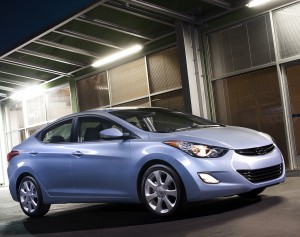Korean carmakers Hyundai and Kia are initiating one of their largest recalls ever – or more precisely, three separate service actions announced today that involve 1.9 million vehicles sold in the U.S. market since late 2006.
The majority of the vehicles involved were subject to earlier recalls designed to address the same issue – electronic gremlins that could impact a wide variety of systems, from stop lamps to stability control, and even prevent the use of the push-button stop feature.
Meanwhile, the small Japanese automaker Subaru is recalling 200,000 vehicles of its own due to brake line corrosion issues.
The larger recalls involving Hyundai and Kia present some serious headaches for the Korean makers after repeated efforts to deal with the electronic control issues. The two makers operate in the U.S. as separate companies but share much of the same technology under the skin of their vehicles.
The largest announcement, involving 1.06 million Hyundai models, follows an earlier 2009 recall and three separate service actions addressing problems with taillight assemblies. Covered are the 2007 to 2009 Accent, 2007 to 2010 Elantra, 2010 to 2011 Genesis Coupe, 2007 to 2011 Santa Fe, 2011 Sonata, 2007 to 2009 Tucson and 2008 to 2009 Veracruz.
According to Hyundai, the “condition could potentially result in intermittent operation of the push-button start feature, intermittent ability to remove the vehicle’s shifter from the park position, illumination of the “ESC” (Electronic Stability Control) indicator lamp in the instrument cluster, intermittent interference with operation of the cruise control feature, or intermittent operation of the stop lamps.”
A total of 623,000 Kia models are impacted by the same problem, and include the 2007 to 2010 Rondo, the 2007 Sedona, 2011 Optima, 2007 to 2011 Sorento, 2010 and 2011 Soul, and the 2007 to 2010 Sportage.
A third recall by Hyundai specifically targets potential airbag problems involving 190,000 compact Elantra sedans sold during the 2011 to 2013 model-years. The National Highway Traffic Safety Administration pressed the maker to act after receiving complaints that a support bracket can become displaced in the event of a crash that triggers the side-impact airbags.
NHTSA was first alerted to the problem when a passenger had serious lacerations to their ear during a crash. Hyundai has since found several vehicles that could experience the same sort of problem, apparently due to the installation of a special auto-dimming mirror offered as an option in the U.S. market.
Hyundai said the problem can be easily fixed. “Industrial manufacturing adhesive strips placed over the bracket prevent displacement of a dislodged bracket during side curtain airbag deployment.”
Repairs for all the new Hyundai and Kia recalls will be made at no charge to owners.
The three new recalls come just days after NHTSA announced it would begin a formal investigation of reports of excessive corrosion potentially impacting nearly 400,000 older Hyundai Sonata models. The rust issue could lead to failure of the rear suspension, the agency noted.
(For more on that problem, Click Here.)
Corrosion is also being blamed for the recall of about 200,000 Subaru Legacy and Outback models produced between December 2003 and April 2009 and sold in 20 cold-weather states, as well as the District of Columbia.
Designated 2005 through 2009 model-years, the Legacy and Outback all-wheel-drive vehicles could experience break line cracks that could result in fluid leaks. That, in turn, might reduce brake functionality and lead to a crash.
Subaru also plans to notify owners and make repairs at no charge.


Apparently the $7 that NHTSA gets on every new car sold is allowing them to put pressure on car makers to report and correct defects. This is good. While high tech cars are very cool, manufacturers have a responsibility to make sure that all of the electronics functions properly.